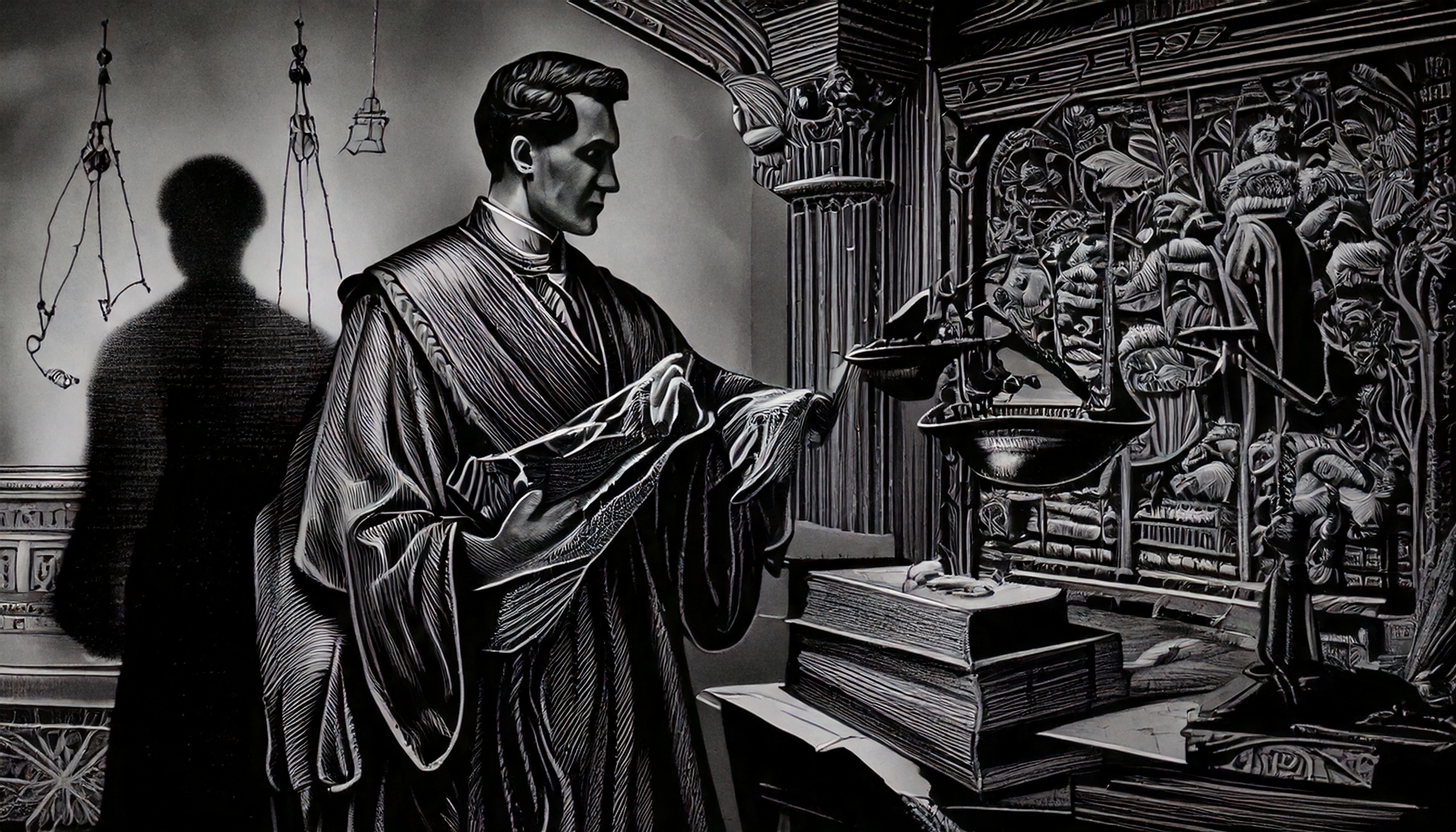Can a Beneficiary be Excluded by a Trustee in a Trust?
Typically, a trustee may not disinherit a beneficiary of a trust without the permission of the trust document or by the decree of a court for the extraordinary circumstances such as bad faith of the beneficiary or impossibility of performance.

Introduction to Beneficiary Rights and Trustee Powers
Our Fiduciary
Trust management is a delicate balancing act of the trustee powers and the beneficiaries' rights. The family trusts set up in an estate plan create legal relationships whose lifespans can span for generations. It does make a difference for such property and the beneficiaries who are relying upon the distributions under the trust. It does make a difference whether a trustee may disinherit a beneficiary under a trust.
The fiduciary duty governs the legal relationship between trustees and beneficiaries, and thus trustees are obligated to act in the best interest of all beneficiaries. The general rule significantly limits a trustee's authority to unilaterally exclude beneficiaries from trust contracts.
Most trust agreements are written carefully in the interests of beneficiaries and in the interests of giving the trustee administrative powers. The issue of the removal of a beneficiary raises some of the most significant questions under trust law and must be approached cautiously under the terms of the trust document and the relevant state statutes.
When May a Trustee Deny a Beneficiary Access to a Trust?
The occasions upon which a trustee is entitled to exclude a beneficiary from a trust are restricted and highly specific. The major scenarios are:
Express Power in Trust Document
The simplest scenario is that the trust document itself gives the trustee the right to exclude beneficiaries. This must be placed in the language of the trust and usually will include some procedures or conditions the trustee must go by.
Certain trust deeds also undertake powers upon the occurrence of certain actions of the beneficiaries like drug or alcohol abuse, crime, or actions which would be detrimental to the trust or to the co-beneficiaries. Despite express power, the trustees are bound to exercise such power in good faith and in a reasonable manner.
Forcible Separ
Courts have the authority to order beneficiary removal in extraordinary situations, even when the trust document does not expressly provide for removal. These cases generally include beneficiary conduct that directly contradicts trust purposes or threatens other beneficiaries' interests.
The courts act upon beneficiaries whose conduct makes the administration of the trust unviable or who participate in activities contrary to the charitable or family purpose of the trust. These applications are thoroughly reviewed by courts as they affect inherent rights of property.
Inability to Perform
Where it becomes legally impossible to benefit an individual beneficiary, the trustees can apply for removal by the court. This would be the case where a beneficiary proves impossible to trace by the use of reasonable efforts, or where the law changes and renders certain distributions impossible.
The impossibility must also be more than inconvenient for the trustee and the courts insist upon clear proof that the continuance of the inclusion of the beneficiary would defeat the main objects of the trust.
Statute Requirements and Attending Court
Removal of a beneficiary under a trust encompasses rigorous legal procedures for safeguarding the rights of beneficiaries and providing for requisite trust amendments. The procedures differ from one state to another but are similar in general guidelines.

Standards of Fiduci
Trustees are required to show that the exclusion of a beneficiary is in the best interest of the trust and not convenience or preference. The standard of fiduciary duty requires the trustees not to favor any beneficiaries and not create conflict of interest.
Expulsion of a beneficiary should be supported by written evidence and express reasoning showing how the expulsion is in the best interests of the trust and the other beneficiaries. Trustees who act arbitrarily or in revenge risk liability for having breached fiduciary duty.
Notice Requirements
Notice
Most of the jurisdictions require the trustee to give appropriate notice of a party in interest before they petition for the removal of a beneficiary. These parties consist of the party for removal, the remainder beneficiaries and in many cases trust remaindermen who stand a benefit from the modification.
Notice periods typically range from 30 to 90 days and differ by state law and court rule. The removal notice should specify the grounds for removal and procedures for objections.
Burden of Proof
The petitioners or trustees for the removal of beneficiaries have the obligation of showing that the removal is requisite and fitting. The burden is normally quite high due to the radical effect upon the rights of beneficiaries.
There should also manifest express authority in the document of the trust or extra-ordinary circumstances for the courts' intervention. The courts are reluctant to alter the terms of the trust without substantial reasons.
Can a Trustee Be a Beneficiary of a Trust
The query "may a trustee act for a beneficiary of a trust" is a common one in trust administration and estate planning. The short answer is yes, but the simultaneous occupancy of this double role raises significant considerations and potential dangers.

Self-dealing matters
Where the trustee is a beneficiary too, any decision can create conflict of interests. Payments to the trustee-beneficiary may seem biased in their favor rather than in the favor of the other beneficiaries.
The trust law circumvents these challenges by introducing more monitoring of trustee activity and special self-dealing regulations. Trustee-beneficiaries should also be extra cautious in documenting their decisions and providing equal treatment for themselves and fellow beneficiaries.
Realistic Family Trust Situations
Most family trusts employ family members as trustee and beneficiaries. The widow/widower may also act as trustee and beneficiary of the trust. The parent's grown children can act as successor trustee and yet still remain beneficiaries of the family trust.
They can function effectively when properly established and administered. The express trust language for the trustee's powers and limitations prevents conflict and offers guidance in making tough decisions.
Professional Oversight
Professional
Some trusts also make provision for trustee-beneficiaries and for professional advice or co-trustees in attempting to avoid conflicts of interest. Trust management decisions can also be given impartial advice by investment counsel, trust companies, or outside trustees.
Expert participation is especially desired in the event of trustee-beneficiaries needing to make discretionary distributions or balance trust amendments possibly affecting their own interests.
Can a Trust Beneficiary Be a Trustee
The related question "can a trustee also be a beneficiary" is merely asking the same question the opposite way. Yes, the trustee of a trust may also be a beneficiary but this should be closely looked at in a legal and practical context.
Acknowledgement of Fiduciary Duty
In accepting appointment as trustee, a beneficiary intentionally assumes fiduciary responsibilities in_direct conflict_ with the beneficiaries' own self-interest. Such a role reversal requires an awareness of the legal responsibilities and the possibility of individual liability.
Beneficiary-trustees owe a duty to act for the purpose of the trust at all times and make best interests decisions for the benefit of all the beneficiaries, not themselves. This can prove oppressive in instances of personal financial necessity and conflict of duty of trust administration.
Resignation and Succession
Beneficiary-trustees who find the double role too burdensome can typically resign as trustee but remain as a beneficiary. The trust documents usually have provision for succession in this event.
Resignation of trustee does not give a right as a beneficiary except the instrument of the trust expressly so provides. Certain trusts have clauses which upon an individual's resignation as trustee revoke the remuneration or benefits.
Expert Opinion
Beneficiary-trustees may profitably seek professional counsel in managing their double responsibilities. Lawyers who specialize in trust law can facilitate the implementation of strategies for conflict reduction and smooth administration.
Professional co-trustees or co-trustees can also prove particularly helpful in managing the complicated work of performing the two tasks at the same time.
Ordinary Situations in which Removal Might Occur
Appreciation of real-life circumstances in which removal of beneficiaries may be permissible puts the legal rules in perspective. Situations both legitimate and improper uses of removal powers are shown.
Self-Destructive Actions and Addiction
Certain trusts give powers for the exclusion of beneficiaries who develop excessive habits or resort to self-destructive practices liable to destroy family relationships or trust property. Such clauses should be carefully drafted in such a manner as not to attract officious discrimination.
Removal for addiction is usually necessary upon proof that the beneficiary's condition would render distributions ineffective or detrimental. Distributions under restrictions or treatment requirements have been preferred by courts in the presence of the problem of drug or liquor addiction.
Crime Performance
Beneficiaries who are parties to the serious crime, more especially violence or dishonesty affecting family members, can disentitle themselves from benefits under the trust. The crime ought to be serious and relating either to the trust objects or the relationships of the beneficiaries.
Minor misconduct is not usually a basis for disinheritance of beneficiaries unless the trust instrument specifically provides for such a case. The courts make a distinction between adolescent indiscretion and repeated serious crime.
Violation of Family Values
A few family trusts include disentilement clauses for conduct contrary to family values or which discredits the family name. Such clauses are contentious and, in the event of a challenge, are viewed by the courts under very sharp scrutiny.
Values-oriented clauses of exclusion must also be specific enough in offering guidance while not being arbitrary towards the groups being protected. The courts are wary of very general moral behavior standards subject to arbitrary application.
Threat for Other Beneficiaries
When a beneficiary's presence or conduct threatens the safety or well-being of other beneficiaries, removal can be justified even without express trust terms. Such situations typically require court intervention to ensure orderly processes.
Violent threats, harassments, or efforts at improper influence of trust administration may render removal justifiable in the absence of less drastic remedies. The evidence should plainly show the conduct of the beneficiary poses genuine dangers for others.
The Removal Proceeding under the Code
Where beneficiaries have to be excluded, the use of the proper procedures of law safeguards the trustee and the other beneficiaries against future disputes. The procedure differs in jurisdictions but possesses general features.

Posting of Petition
The removal process frequently begins by the commencement of a petition in the proper court in which the trust is under the jurisdiction. The petition must allege definite grounds for removal and attendant facts.
State petition requirements vary but are usually comprised of details of trust identification, details of the beneficiary, grounds for removal, and requested relief. Supporting documents for the petition may include trust documents, letters, and evidence of questionable conduct.
Service of Process
Appropriate legal notices should reach all the interested parties. These include the remover faced by the beneficiary in removal proceedings and the current beneficiaries and the potential remainder beneficiaries who would stand affected.
Service obligations require any of the parties whose contingent interests are involved in the trust at issue to afford any possibility of being heard in the case. Ineffectively given notices can invalidate the removal orders.
Evidence Hearings
Courts usually hold evidentiary hearings in which parties submit evidence for and against the removal of beneficiaries. The hearings leave room for a diligent consideration of circumstances and adverse interests.
The intended beneficiary for eviction enjoys the right to present defenses and challenge evidence being presented against him/her. The other beneficiaries and the parties with interests also gain a chance of being heard in the proposed eviction.
Judicial Decision
Based on any argument and evidence presented, the courts make a decision in approving or rejecting the removal of beneficiaries. Authorized removals also usually have express terms regarding how the administration of the trust is going to differ and what rights, if any, the removed beneficiary is going to retain.
Court orders give legal protection to the trustees in taking decisions for removal in line with the directives of the courts. Court orders also give clear records for the easy management of the trust in the future.
Consequences of the Wrong Removal of Beneficiaries
The trustees who unknowingly exclude beneficiaries are liable for harsh legal sanctions in the form of personal liability and removal from office as trustees. Knowledge of such pitfalls allows for the observance of proper procedures.
Claims for Breach of Fiduciary Dutyrequirements
Misremoved beneficiaries may sue the trustees for fiduciary breach for damages for distributions missed and other damage done by the misremoval. These causes of action may impose substantial personal liability upon the trustees.
Successful fiduciary duty lawsuits can also entitle breached beneficiaries to payment of lost wages, investment returns they would have earned, and lawyer's fees in contesting the removal.
Removal of Trustee
The courts can also dismiss trustees who abuse their powers by wrongfully dismissing beneficiaries. Removal of trustees provides a further safeguard for the integrity of the trust and the rights of the beneficiaries.
Such outgoing trustees can also face surcharge actions in which they are forced to compensate the trust for losses stemming from their improper management. Such sanctions are aimed at highlighting the importance of following due processes in ousting any beneficiary.
Trust Modification Orders
The courts may also alter terms of trust in such a way as not to permit wrongful removal in the future or in reinstating wrongly removed beneficiaries. These variations may in effect alter the way the trust shall hereafter be operated.
Courts can order professional trust administration or co-trustee appointments to prevent future administrative problems.
State Laws and Distinctions
State law differs such that the removal of beneficiaries is subject to different procedures and standards. Familiarity with the differences is necessary for effective trust administration and compliance.

Uniform Trust Code Provisions
The Uniform Trust Code adopt states have relatively similar procedures for the removal and amendment of beneficiaries in trusts. The states also require the permission of the courts for the majority of the removals of beneficiaries and have the following special procedures in effect.
Uniform Trust Code includes the alteration of terms of the trust by the court in the event the circumstances have significantly varied from those at the inception of the trust. The alterations at times support the elimination of beneficiaries in appropriate cases.
Common Law States
Traditional common law regimes for trusting administration may have various requirements and procedures for the removal of beneficiaries. These may vary in application from the requirements for notice up to burdens of proof.
Common law states will more readily emphasize strict compliance in respect of the terms of the trust document and may be less willing to approve variations absent express trust power.
State-Specific Stat
Some states also have distinct enactments regarding the administration and modification of trusts controlling procedures for the removal of beneficiaries. They can also give extra protection for beneficiaries or expedited procedures for legitimate removals.
Professional lawyers and trustees should also be informed regarding state law development affecting trust administration and the rights of beneficiaries.
When to Bring in Legal Specialists
Due to the difficulty and the potential repercussions of the removal of a beneficiary, qualified legal advice is near-universally desirable when the matter is in consideration. Some circumstances specifically make a prior qualified consult a necessity.
Kinship Family Relations
Kin
Wherein family relationships make trust administration problematic, lawyers familiar with the law of trusts are capable of addressing sensitive matters while safeguarding legal rights. Family disputes normally fare better under qualified mediation prior to resort in removal proceedings.
Attorneys can also advise about removal possibilities that can remedy core issues without affecting family connections and trust intentions.
Vagueness and Trust
Trust documents whose language regarding trustee powers or disinheritance of beneficiaries is unclear or uncertain requires professionals for interpretation. Lawyers are able to examine provisions of the trust under the governing state law in order to discover available choices.
Expert guidance helps make any removal determinations within terms of trust and at law in a manner which reduces risk of successful challenge.
Multi-State Challenges
Multistate interactions cause the jurisdictional challenges which the expert addresses. Expert representation achieves compliance with all the respective laws and the identification of the correct venue in any subsequent court proceedings.
Interstate trust administration often involves complex choice-of-law questions that can affect removal actions and beneficiaries' rights.
Alternatives to Beneficiary Removal
Before pursuing outright beneficiary removal, trustees are required to use alternative methods that can cure underlying problems without disturbing beneficiary relationships and rights.
Restricted Distributions
As an alternative to outright removal, trustees can restrict distributions to problematic beneficiaries. Such restrictions can address specific problems while the beneficiary status is retained.
Restriction of distributions can include substance abuse recovery requirements, financial guidance, or other conditions which heal the root issues of concern.
Professional Oversight
Professional
Using professional trustees or trust protectors also allows for a check and guidance for questionable trust administration decisions. The use of professionals will usually result in disputes without the need for removal actions.
Some trusts also provide for family councils or advisory committees which can help handle beneficiary concerns and disputes before they are serious enough to trigger consideration for their removal.
Trust Changes
Court-approved trust amendments in certain cases can address concerns without outright ousting the beneficiaries. The amendments can amend terms of distributions, set new requirements, or reschedule trust administration.
Trust variations are less prohibitive than absolute abolition and possibly better reach the trust's objects while addressing legitimate concerns regarding the beneficiaries' conduct.
Conclusion
If a trustee can remove a beneficiary in a trust, then such a trustee must consider this carefully by way of the trust agreements, the pertinent state statute, and the circumstances presented. Removal does happen in a limited number of cases, but this is a drastic remedy and should not ever be sought unless more drastic remedies prove unsuccessful.
Trustees considering beneficiary removal must remember their fiduciary duties and the significant legal standards that govern such decisions. Whether a trustee can be a beneficiary of a trust and whether a trust beneficiary can be a trustee are related questions that highlight the complex relationships inherent in trust administration.
Removal of a beneficiary can only be effected under the guidance of a qualified lawyer. The consequence is severe for all parties involved, and the proper procedures must be effected in order to safeguard the interest of all and secure compliance with the relevant statutes.
Recognition of these maxims facilitates the smooth passage of trustees, beneficiaries and their professionals through one of the trickiest realms of trust law while maintaining the very intentions the law of trusts seeks to uphold. In instances where removal is inevitable, sensitive planning and expert counsel work to safeguard all legitimate interests yet achieve the overriding intentions of the trust.










